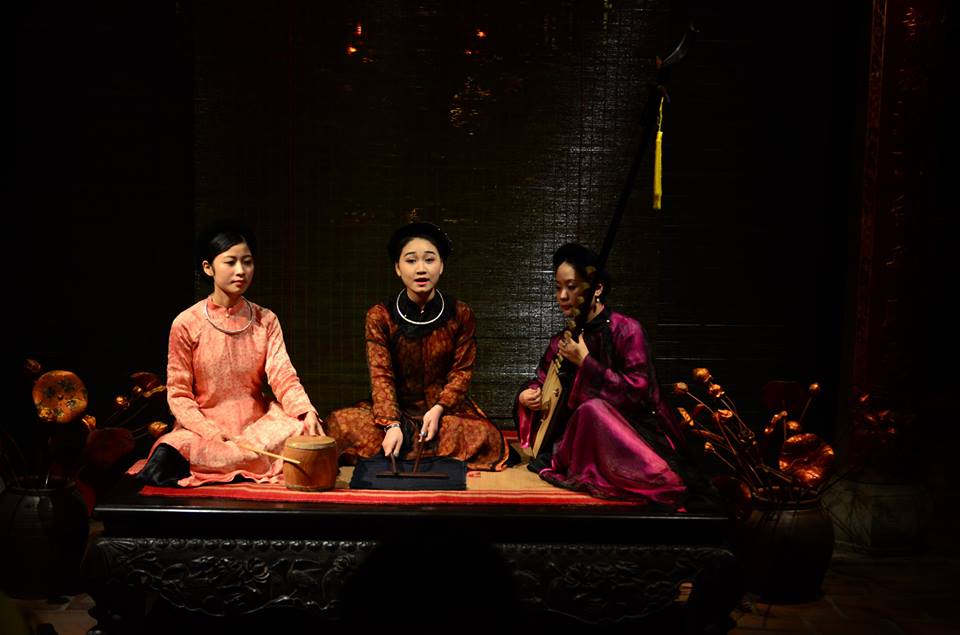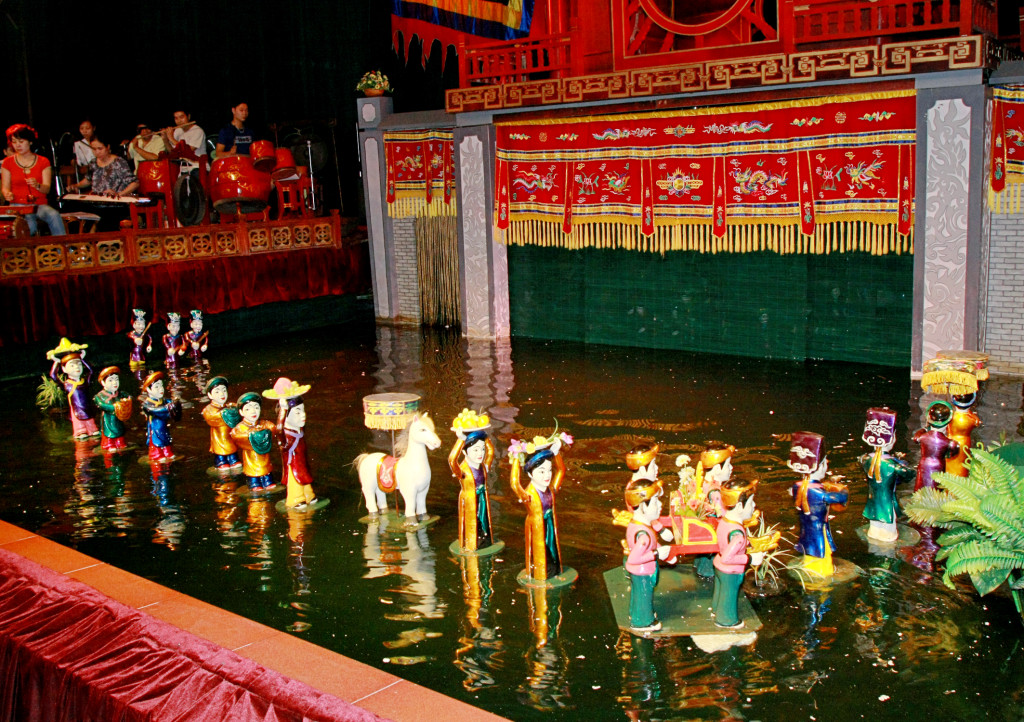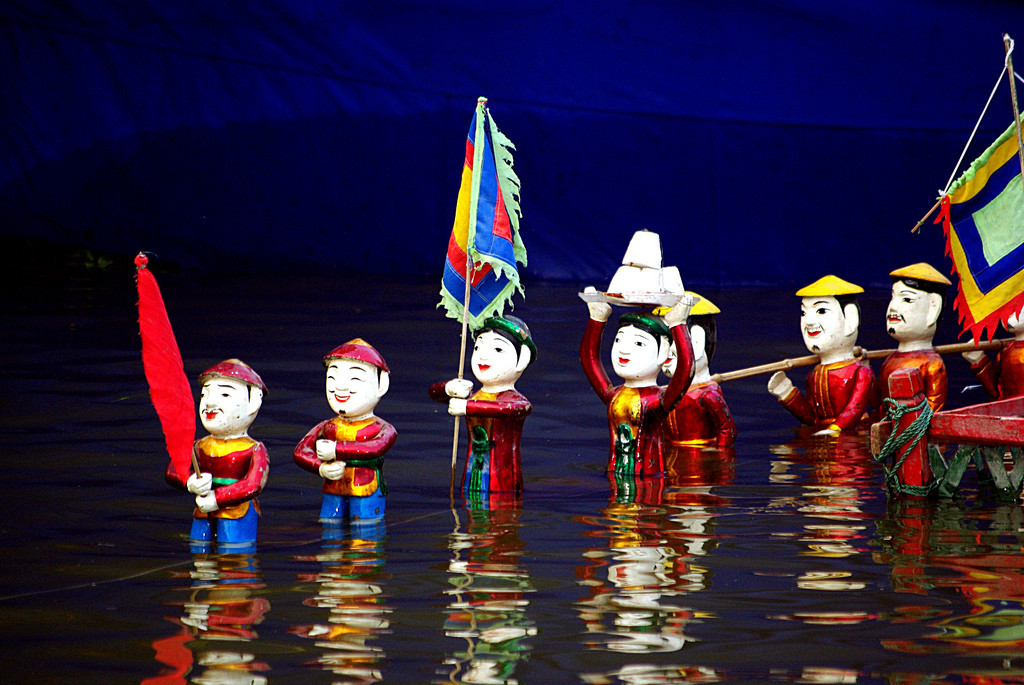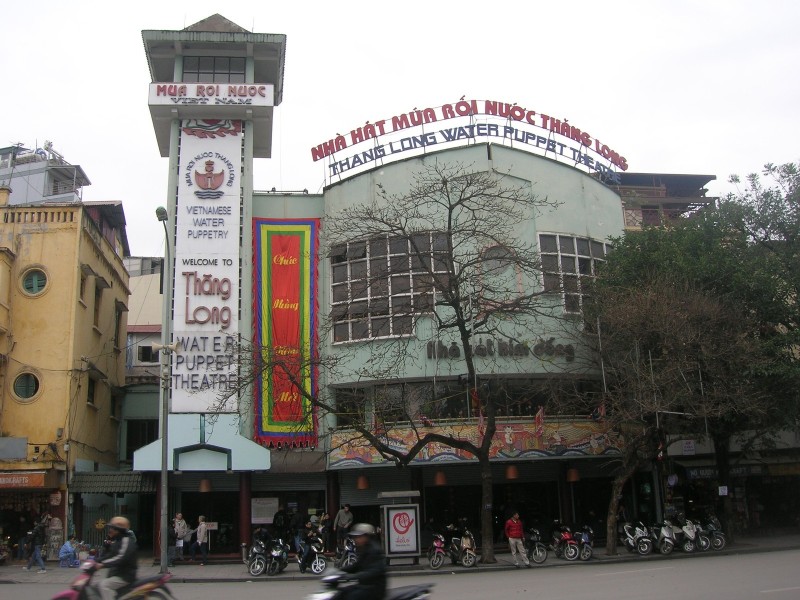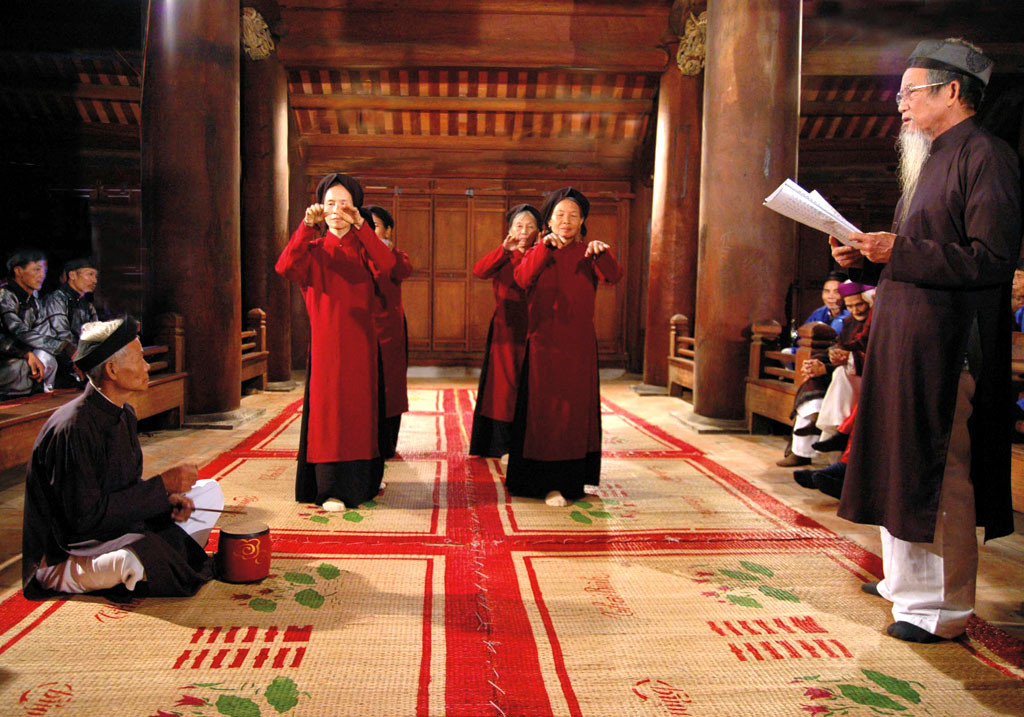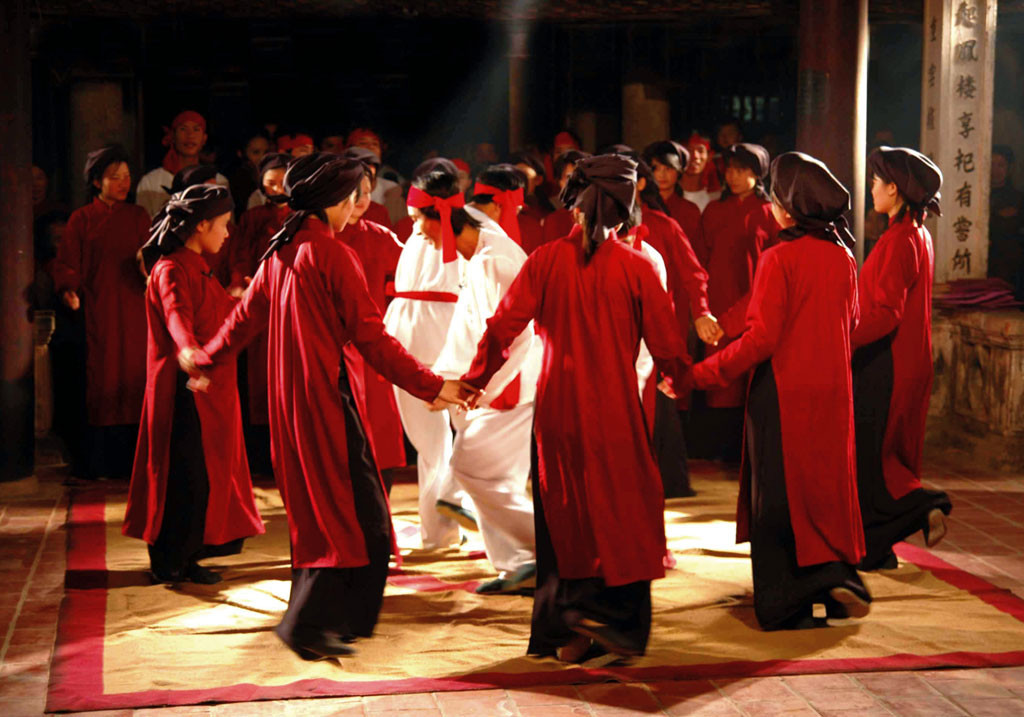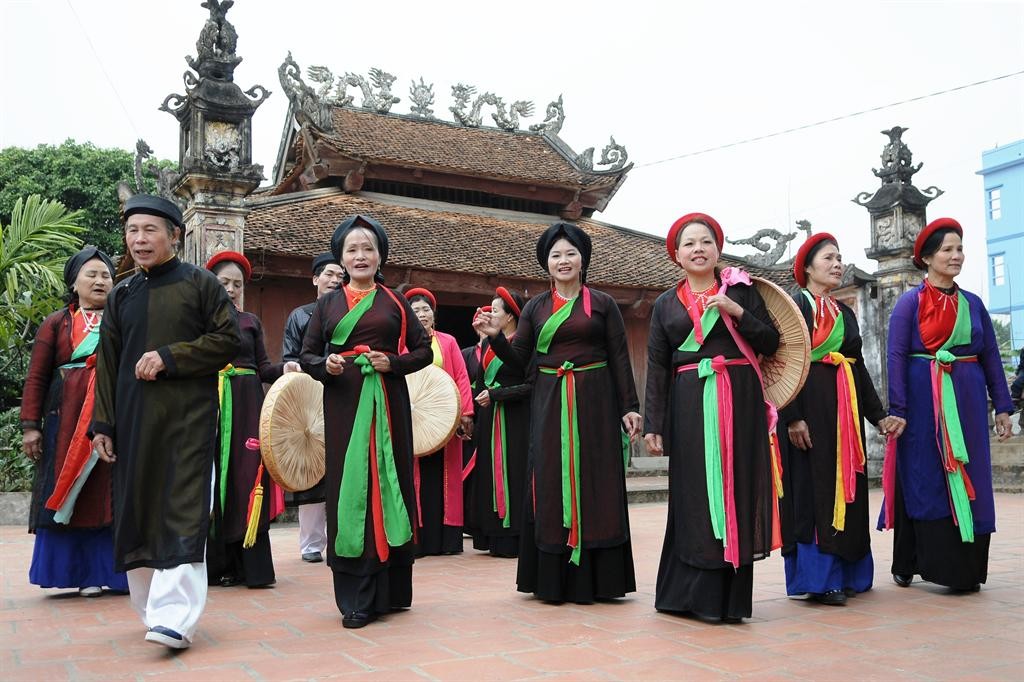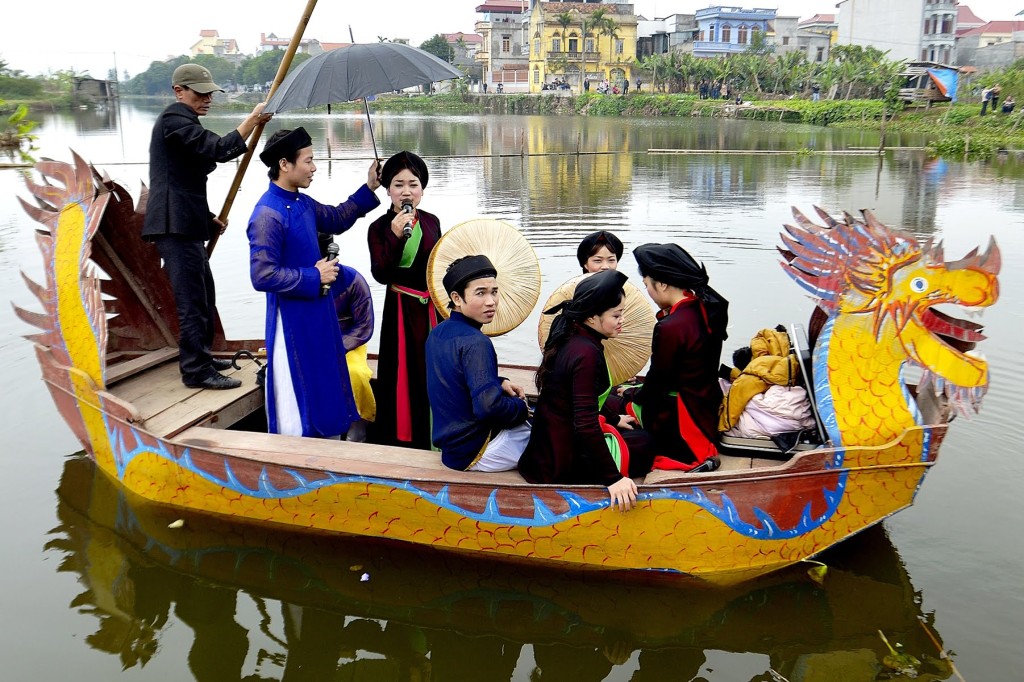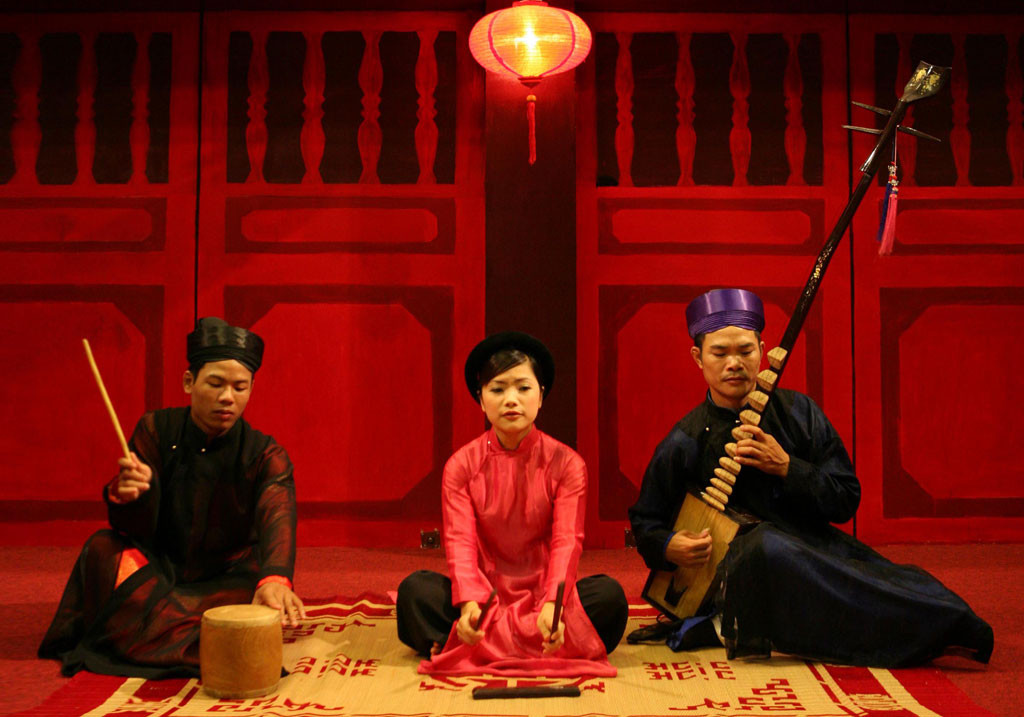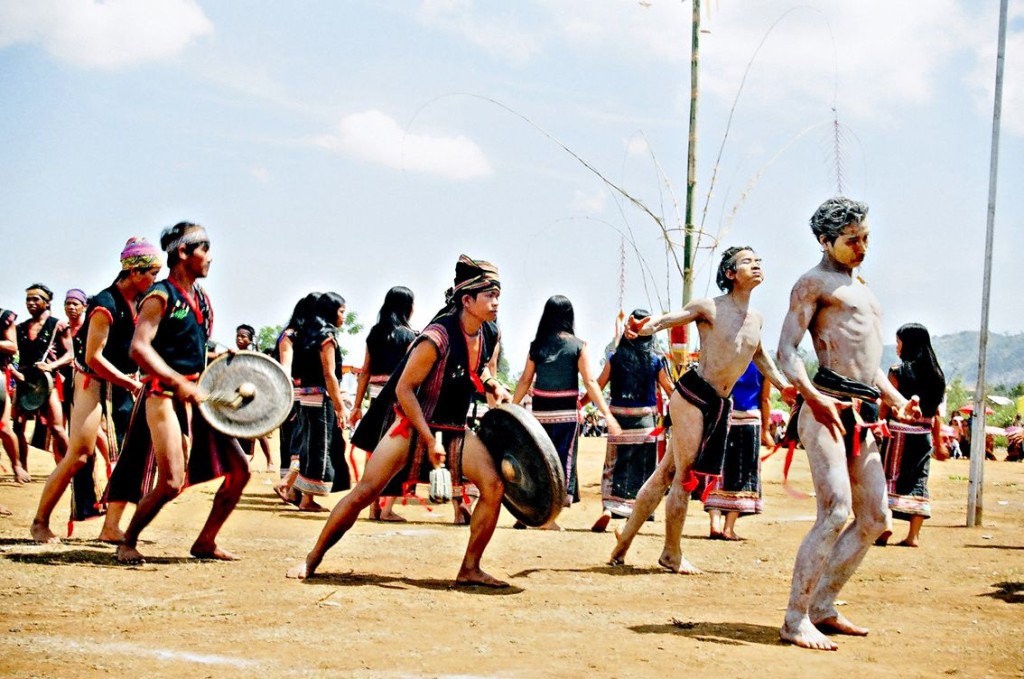Together with traditional folk games, Vietnamese folk arts have taken an important role in preserving and promoting Vietnamese cultural identity.
Related: Vietnam Classic Movies
Water puppetry
Water puppetry comes from North Vietnam. This is a famous folk-art which is dated back to the 11th century. Villagers often performed water puppetry on occasions like festivals, lunar New Year, ceremonies… at the village’s pond. There are many countries that have puppetry but you can only find water puppetry in Vietnam.
The puppets are made of wood then lacquered to be watertight and endurable. To perform, the performers control by a pole linking to the puppet that is hidden under the water surface. These puppeteers stand behind the stage in a waist-deep pool and move the puppets accordingly to the music.
Cheo singers sing along to tell the story and each puppet role has a distinctive singing voice at the back. The theme of the play concentrates on the daily life of rural people and stories of legends and national history. Above all, water puppetry created a relaxing space for rural citizens in the past; both watching and playing water puppetry was a good way for the local to entertain, escaping from their daily worries and hardworking life.
Rural people use water puppet plays to express their wish for a better life of prosperity and happiness. In modern time, water puppetry became a popular form of entertainment to both locals and foreigners.
Where to watch
Venue: Thang Long Water Puppet Theater
Address: 57B Dinh Tien Hoang Street, Hanoi.
Ticket price: $3-5/person, purchased at doors
Venue: Hanoi Museum of Ethnology
Address: Nguyen Van Huyen, Hanoi
Ticket price: Included in the entrance fee.
Hát xoan (Xoan Singing)
The spring melodies that are dedicated to the gods and ancestors represent the wishes for a better life of delta dwellers.
Xoan singing or spring singing is a genre of Vietnamese folk music practised in Phu Tho province in the first two months of lunar New Year. In this time, Xoan guilds in Phu Tho start to open spring festival one by one at the village shrine, temple and communal house. The main singing event is organised on the 5th of January Lunar calendar as part of a Hung king temple festival.
There are three styles of Xoan singing:
- Honouring Hung kings and village guardian spirits
- Ritual singing for good harvests, health and fortune
- Alternating singing between male and female voices
The genre includes acting, ceremony, chanting, dancing, drumming, and singing; with themes involve romance, riddles, and work. Each Xoan music guild is headed by a leader, referred to as the trùm; male instrumentalists are called kép and female singers, đào. A guild consists of ten to fifteen performers, but there are only four traditional guilds remaining, increasingly ageing.
The music has a spare structure with few ornamental notes and simple rhythms, and Xoan is characterized by a modulation between singers and instrumentalists at the perfect fourth interval. Knowledge, customs and techniques for singing, dancing and playing drum and clappers are traditionally transmitted orally by the guild leader. Hát xoan has been inscribed on the List of Intangible Cultural Heritage in Need of Urgent Safeguarding since 2011.
Quan Họ (Alternate singing)
Of melodies that preserve the soul of North Vietnam passed from generation to generation through oral traditions
Quan Ho or Alternate singing is a Vietnamese folk music style has origins in Bac Ninh and Bac Giang in particular and in Red River Delta in general. The Quan Ho is often performed in spring festivals that follow the celebration of Tết such as Lim festival or festivals of Quan Ho villages…
The singing is between groups of female singers and male singers issuing musical challenges and responses. There is no official source of Quan Ho birth but it is believed that the oldest songs of this art are dated back to late 16th century. The lyrics are mostly about young love, the sentimental desire of young adults and feelings for each other. The singers are called liền anh to male singers, and liền chị to female singers. Male groups and female groups from different villages take turns to sing. In general, an initial “challenge phrase” (câu ra) from the known body of songs is sung by a pair of female singers, following which a pair of male singers will respond by selecting and singing a “matching phrase” (câu đối), which must repeat the melody of the challenge phrase. Compared to Ca Tru which only has 56 forms, the number of different melody variations in Quan ho is 213 with more than 400 songs that are written down in score form, and many more that aren’t.
Traditional Quan Ho has no audience and no instrumental music is simply a form of a conversation between the singers. Modern Quan Ho is open to the audience and there might be dancing and instrumental music added to the performance. Nowadays, Quan Ho is brought on stage, broadcasted and made into CDs and DVDs very commonly.
Quan Ho stands for the friendship custom between villages. The male singers from the different village will make friends with the female singers from another village or vice versa. To protect this pure friendship, there was a rule that men and women from these villages are not allowed to marry each other. But as of today, this rule can be considered as no longer exist and there are many love stories with happy endings of liền anh and liền chị.
Ca Tru Singing
There is a story of a north Viet woman named Ả Đào who created this genre and charmed the enemy with her voice, thus this genre other name was “Hát Ả Đào” (Miss Ả Dao’s singing). Another story claims another musician named Đào Thi who was loved by the Lý Dynasty imperial court. And since her time, a ca trù singers was referred to as “Đào nương” (“nương” means “lady”).
Ca Tru singing has its origins in North Vietnam and was flourishing during the 15th century. Ca Tru is a unique chamber music genre with its performing space, musical instruments and distinct style of poetry. There are up to 56 forms of melodies called thể cách. Singers have to spend a long time to follow and master these techniques.
A Ca Tru performance is involved by at least 3 people:
- A female singer who sings and plays phách during her performance (small wooden sticks beat on a small bamboo bar to serve as percussion).
- A male instrumentalist called kép who plays đàn đáy a three-stringed lute(which has 3 strings and 10 frets).
- A drummer who is in charge of playing the trống chầu (or praise drum) to encourage the female singer. He is a musician of the group or a composer who understands the beauty of Ca Tru melodies. He uses drum rhythms to mark the end and beginning of different sections and phrases of music and particular drumming patterns to show his appreciation of the music and the performers.
Where to watch
Venue: Ca Tru Thang Long Club (from 20:00 to 21:00) on every Tuesday, Thursday, Saturday
Address: Old House 87 Ma May Street, Hoan Kiem District
Performances: Non Nước, Gửi thư (Sending letter), 36 tunes, Hát Ru (Lullaby), Hát Nói (recital melody), Tỳ Bà Hành…
Ticket price: US$10 (VND209.000)/turn
(Tel: (84) 1223 266 897
Email: info@catruthanglong.com
Website: http://catruthanglong.com)
Space of Gong Culture
The cultural space of the Gongs in the central highlands of Vietnam covers five provinces which are Kon Tum, Gia Lai, ĐăkLăk, Đăk Nông, Lâm Đồng and nearly seventeen minority ethnic groups belonging to the Austro-Asian and Austronesian linguistic groups.
Gongs are deeply rooted in the life of the ethnic minorities in Central Highlands Vietnam; the voice of human’s spirit and soul to express joy and sadness in life, work and daily activities. The gongs are musical instruments made by brass alloy or a mixture of brass and gold, silver, bronze. There are two types of gong – bossed or nipple gong and flat gong (Vietnamese: chieng). These instruments have many sizes, from 20cm to 60cm in diameter, the maximum kind from 90cm to 120cm. Gongs can be used alone or used in the orchestra, set from 3 to 12 or 13 units, even from 18 to 20 units. In fact, a 6 gong orchestra will give a minimum of 12 or more tones. That explains why the timbre of gong sounds full and deep. An orchestra of 3 to 12 gongs is played by the village ensembles, which are made up of men or women. Different arrangements and rhythms are adapted to the context of the ceremony, for example, the ritual sacrifice of the bullocks, the blessing of the rice or mourning rites.
Tay Nguyen gong is a unique, distinctive and diverse instrument born and treated from the belief of a mystical world where the gongs produce a privileged language between humans, divinities and the supernatural world. In every gong, there is a god or goddess who gets more powerful when the gong is older. Every family possesses at least one gong, which indicates the family’s wealth, authority and prestige, and also ensures its protection.
Space of Gong Culture is recognized by UNESCO in 2005 as “a masterpiece of the oral and intangible heritage of humanity”.
